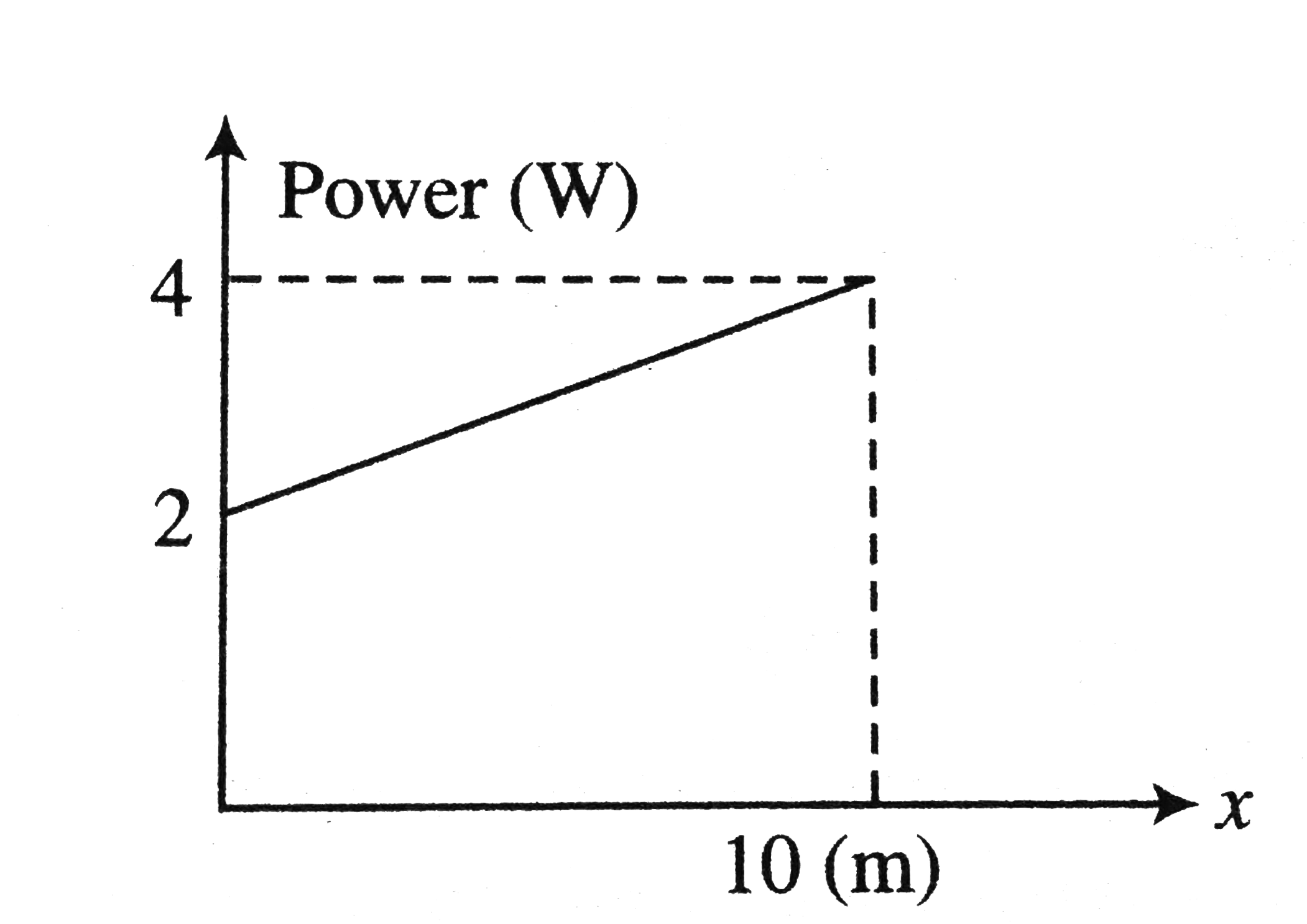A body of mass m=10−2kg is moving in a medium and experiences a frictional force F=−Kυ2. Its initial speed is υ0=10ms−2. If , after 10s, its energy is 18mυ20, the value of k will be
1/10
1/10000
1000
100
The correct Answer is:B
To solve the problem, we need to find the value of k given the mass m=10−2kg, the initial speed v0=10m/s, and the final energy after t=10s is 18mv20.
1. Calculate Initial Kinetic Energy:
The initial kinetic energy Ek of the body can be calculated using the formula:
Ek=12mv20
Substituting the values:
Ek=12×10−2kg×(10m/s)2=12×10−2×100=0.5×10−2=5×10−3J
2. Final Energy After 10 Seconds:
According to the problem, the energy after 10s is given by:
Ef=18mv20
Substituting the values:
Ef=18×10−2×(10)2=18×10−2×100=18×10−2×100=18×10−2×100=1.25×10−2J
3. Determine Change in Kinetic Energy:
The change in kinetic energy ΔE over 10s is:
ΔE=Ek−Ef=5×10−3−1.25×10−2=−7.5×10−3J
4. Relate Frictional Force to Energy Loss:
The work done by the frictional force over time can be expressed as:
W=F⋅d
Since the frictional force is given as F=−kv2, we can relate it to the energy lost. The energy lost due to friction is equal to the change in kinetic energy:
−ΔE=k∫100v2dt
5. Using the Average Velocity:
Since the body slows down, we can use the average velocity to estimate the distance traveled. The average velocity vavg can be calculated as:
vavg=v0+vf2
where vf is the final velocity. From the energy relation, we found vf=v02=5m/s.
vavg=10+52=7.5m/s
The distance d traveled in 10s is:
d=vavg⋅t=7.5m/s⋅10s=75m
6. Calculate Work Done by Friction:
The work done by the frictional force is:
W=−ΔE=7.5×10−3J
Therefore,
W=k⋅d⟹7.5×10−3=k⋅75
Solving for k:
k=7.5×10−375=10−4kg/m
Final Answer:
The value of k is 10−4kg/m.
The initial kinetic energy Ek of the body can be calculated using the formula:
Ek=12mv20
Substituting the values:
Ek=12×10−2kg×(10m/s)2=12×10−2×100=0.5×10−2=5×10−3J
According to the problem, the energy after 10s is given by:
Ef=18mv20
Substituting the values:
Ef=18×10−2×(10)2=18×10−2×100=18×10−2×100=18×10−2×100=1.25×10−2J
The change in kinetic energy ΔE over 10s is:
ΔE=Ek−Ef=5×10−3−1.25×10−2=−7.5×10−3J
The work done by the frictional force over time can be expressed as:
W=F⋅d
Since the frictional force is given as F=−kv2, we can relate it to the energy lost. The energy lost due to friction is equal to the change in kinetic energy:
−ΔE=k∫100v2dt
Since the body slows down, we can use the average velocity to estimate the distance traveled. The average velocity vavg can be calculated as:
vavg=v0+vf2
where vf is the final velocity. From the energy relation, we found vf=v02=5m/s.
vavg=10+52=7.5m/s
The distance d traveled in 10s is:
d=vavg⋅t=7.5m/s⋅10s=75m
The work done by the frictional force is:
W=−ΔE=7.5×10−3J
Therefore,
W=k⋅d⟹7.5×10−3=k⋅75
Solving for k:
k=7.5×10−375=10−4kg/m
The value of k is 10−4kg/m.
Topper's Solved these Questions
Similar Questions
A body of mass m = 1 kg is moving in a medium and experiences a frictional force F = -kv, where v is the speed of the body. The initial speed is v0=10ms−1 and after 10 s, its energy becomes half of the initial energy. Then, the value of k is
View SolutionA body of mass 10 kg is being acted upon by a force 3t2 and an opposing constant force of 32 N. The initial speed is 10ms−1.The velocity of body after 5 s is
View SolutionA body of mass 10 kg moving at a height of 2 m, with uniform speed of 2 m/s. Its total energy is
View SolutionA body of mass 5 kg is taken a height 5 m to 10 m .Find the increase in its potential energy (g=10 m s−2)
View SolutionA particle of mass 0.2kg is moving in one dimension under a force that delivers constant power 0.5W to the particle.If the initial speed =0 then the final speed (in ms−1) after 5s is.
View SolutionA body starts moving with a velocity v0=10ms−1. It experiences a retardation equal to 0.2v2. Its velocity after 2s is given by
View SolutionA block of mass 20 kg is on a horizontal plane of a coefficient of friction 0.5. by applying 6.0 newton force on it, frictional force will be (g=10m/s2).
View SolutionA block of mass 2.00 kg moving at a speed of 10.0 m/s accelerates at 3.0 ms2 for 5.00 s. Compute its final kinetic enegy.
View SolutionA body of mass 1 kg is rotated in a horizontal circle of radius 1 m and moves with velocity 2ms−1 The work done in 10 revolutions is
View SolutionA particle A of mass 10/7kg is moving in the positive direction of x-axis. At initial position x=0, its velocity is 1ms−1, then its velocity at x=10m is (use the graph given)

View Solution